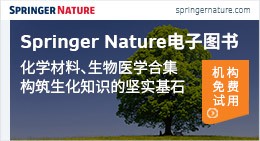Folia Geobotanica ( IF 1.0 ) Pub Date : 2023-10-04 , DOI: 10.1007/s12224-023-09438-1 Surendra Bam , Jacqueline P. Ott , Jack L. Butler , Lan Xu

|
Invasive clonal species may exhibit different growth strategies than their native clonal competitors. In this study, we examined the spatial distribution of tiller outgrowth and the bud bank by comparing the investment in phalanx versus guerilla growth of a native and invasive perennial grass in North America. We also examined the effect of altered precipitation frequency, clipping, and competition on their clonal growth strategies. Investment in phalanx and guerilla growth was assessed by examining live propagule and tiller production from the plant crown versus its rhizomes. Although invasive Bromus inermis and native Pascopyrum smithii exhibited similar clonal growth strategies as young seedlings, their clonal growth strategies significantly differed by the end of their first growing season. Pascopyrum smithii invested in dual phalanx and guerilla tiller outgrowth and bud placement, and B. inermis primarily invested in phalanx tiller outgrowth and bud placement. Competition rather than intra-annual precipitation variability and clipping altered the clonal growth strategy of these species. Intra- and inter- specific competition did not alter tiller outgrowth for either species. However, inter-specific competition caused both species to alter their bud placement. Bromus inermis shifted more buds from phalanx to guerilla positions while P. smithii shifted in the opposite direction. This may enable invasive B. inermis to expand while confining native P. smithii to more localized areas in the future. Clonal growth strategies appear to be species specific and responsive to inter-specific competition. Investigating the belowground bud aspect of clonal growth can reveal the mechanism driving the future aboveground clonal growth strategy of native and invasive rhizomatous grasses and help inform the patterns of invasion within a plant community.
中文翻译:

本地和入侵根茎多年生草类响应降水变化、修剪和竞争的地下生长策略
入侵克隆物种可能表现出与其本地克隆竞争者不同的生长策略。在这项研究中,我们通过比较北美本土和入侵多年生草本植物的方阵生长与游击生长,研究了分蘖生长和芽库的空间分布。我们还研究了改变降水频率、修剪和竞争对其克隆生长策略的影响。通过检查植物冠及其根茎的活繁殖体和分蘖产量来评估对方阵和游击队生长的投资。尽管入侵的无芒雀麦和本地雀麦在幼苗时表现出相似的克隆生长策略,但它们的克隆生长策略在第一个生长季节结束时显着不同。Pascopyrum smithii投资于双节分蘖和游击分蘖的生长和芽的放置,而B. inermis主要投资于节节分蘖的生长和芽的放置。竞争而不是年内降水量变化和修剪改变了这些物种的克隆生长策略。种内和种间竞争并没有改变这两个物种的分蘖生长。然而,种间竞争导致两个物种改变了芽的位置。无芒雀麦将更多的芽从方阵转移到游击位置,而史密斯雀麦则朝相反方向转移。这可能使入侵性无刺芽孢杆菌能够扩大,同时将本地的史密斯氏芽孢杆菌未来限制在更局部的区域。克隆生长策略似乎是物种特异性的并且对物种间竞争敏感。研究克隆生长的地下芽方面可以揭示驱动本地和入侵根茎草未来地上克隆生长策略的机制,并有助于了解植物群落内的入侵模式。






































 京公网安备 11010802027423号
京公网安备 11010802027423号